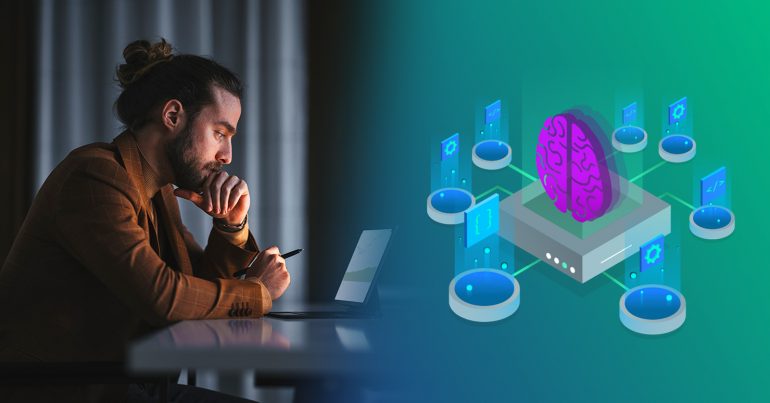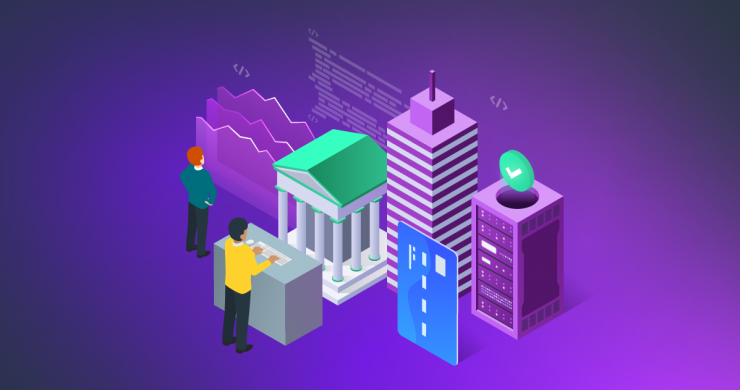Why combining A.I. and automation helps you capitalize on your existing assets

Whether or not you’ve started your automation or A.I. journeys, your business has valuable assets and data that can be unlocked to find huge benefits.
A.I. and automation: what’s the difference?
Although they are often confused and conflated, automation and artificial intelligence are two distinct entities. However, when you combine the two to create A.I. enabled process automation, it not only gives the best of both worlds, but brings each element—and your business—to a whole new level.
Automation
Definition:
- Automation describes a wide range of technologies that reduce human intervention in processes.
- This is ideal for repetitive, rule-based tasks that are largely predetermined and need little human input.
Examples:
- Assembly line automation
Automated email responses
Artificial Intelligence
Definition:
- A.I. is intelligence displayed by machines and computer systems, which have been developed to perform tasks that would usually require human intelligence.
- This includes visual perception, speech recognition, decision- making, and translation between languages.
Examples:
- Smart assistants
Self-driving cars
A.I. enabled process automation
Definition:
- This combines A.I. with process automation to surface invisible patterns and optimal processes that help businesses learn, predict, and take action.
- Companies use A.I. enabled process automation to capitalize on their existing assets and create new processes that drive transformative change.
Examples:
The top 5 reasons you should combine A.I. and automation
- Take advantage of unstructured data
Software can automate tasks from conditional logic with structured data. However, 80-90% of an organization’s historical data can be unstructured. A.I. allows automation to also cover unstructured data, saving time and increasing efficiency. - Capitalize on high-volume tasks
High-volume tasks are time-consuming and often boring, so having a human do them is inefficient and has a good chance of human error creeping in. However, with high-volume tasks comes a large amount of historical data, meaning A.I. will be better trained, and do the task even more efficiently. - Keep your business safe
A.I. enabled process automation can monitor data in real time to detect risks faster than humans can, and trigger response alerts or automations, creating a proactive response. - Save time and optimize
When used alone, automation requires human input for any changes. With A.I. added, tasks can have as little as zero human involvement, saving huge amounts of time. Machine learning can also mean A.I. becomes self-training, which feeds into the automated processes, leading to greater and greater optimization over time. - Achieve a rapid ROI
When A.I. and automation are united effectively, ROI comes very quickly. And as you make iterative improvements, you can streamline and accelerate business processes, making things even more efficient.
Automation and artificial intelligence have their strengths when used individually. When combined, they complement one another to compound these strengths, and save time and money by unlocking the value of your existing assets and historical data.
Want to understand how Intelygenz unites A.I. and automation to help your business hit targets? Discover what makes us different when you download our brochure.

Get the latest roundup of the most important, interesting and stories from the past week. In your inbox every Saturday by 10am.
Related Articles you might like
Key Strategies for Financial Institutions to Unlock AI Value
In the financial services sector, artificial intelligence (AI) is often heralded as a transformative force capable of revolutionizing everything from […]
View Blog PostIntelygenz President Chris Brown Shares Vision to Revolutionize Finance in FinTech Magazine
Intelygenz President Chris Brown was recently featured in an in-depth interview with FinTech Magazine, in which he outlined his mission […]
View Blog PostBridging the gap: From AI concepts to production success
In recent years, the conversation around artificial intelligence (AI) has shifted from theoretical possibilities to tangible realities. As businesses strive […]
View Blog Post

